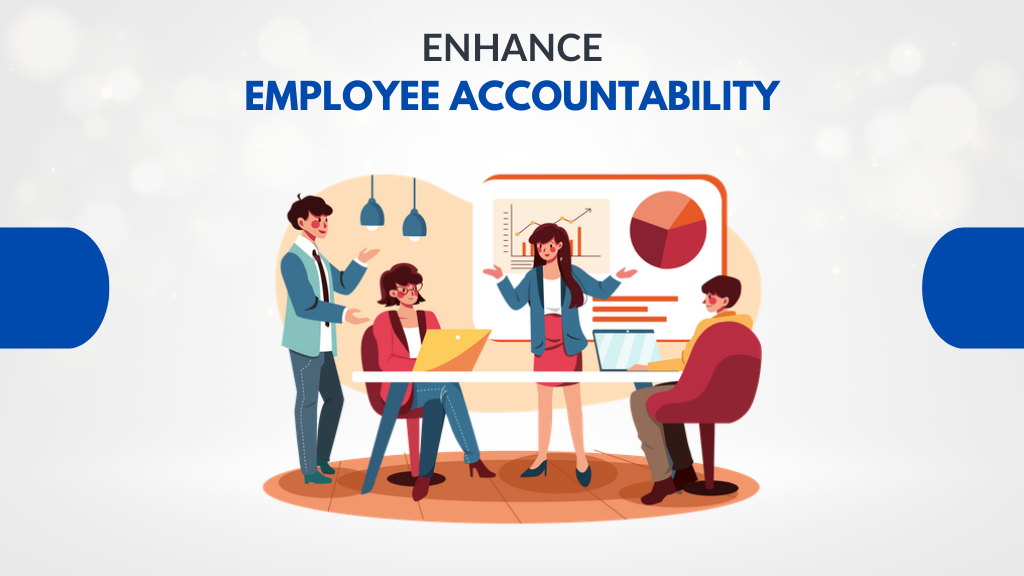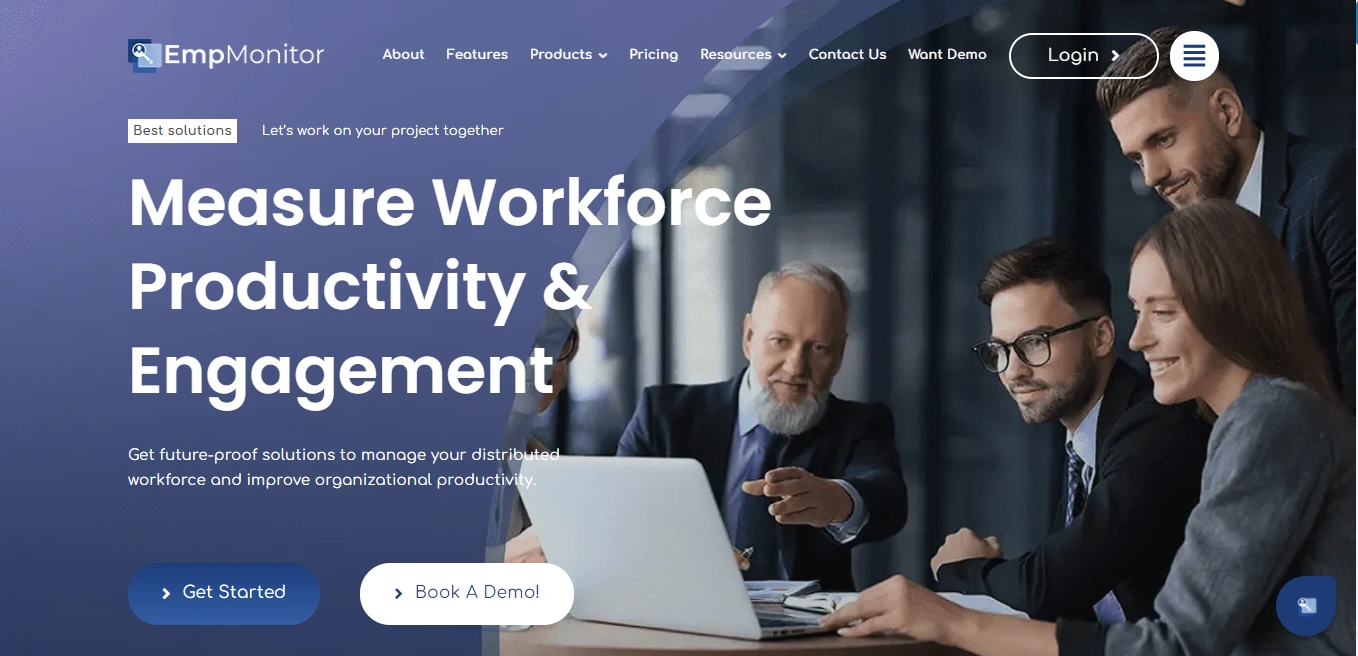Accountability in the workplace is a crucial but sometimes elusive trait that sets high-performing teams and employees apart. When employee accountability is lacking, it can hinder both individual and company potential.
Consider a scenario where someone arrives late to a meeting and openly acknowledges the delay, taking ownership of the situation. This demonstrates a positive display of accountability and sets the stage for open communication and problem-solving.
For organizations aiming to achieve their goals and maintain a high level of employee engagement, nurturing a culture of accountability is key.
The encouraging news is that by implementing the right strategies, you can cultivate an environment where responsibility is embraced, leading to enhanced productivity and greater job satisfaction for employees.
Let’s explore the steps to make this a reality!
In a hurry? Listen to the blog instead!
Why Is Accountability Important In The Workplace?
Accountability is crucial in the workplace for several reasons:
Ensures Completion of Tasks: Accountability ensures that tasks and projects get completed efficiently and effectively. When employees know they are accountable for their work, they are more likely to take ownership and follow through on their commitments, leading to better productivity and outcomes.
Promotes Trust and Integrity: In an accountable workplace, employees trust each other to fulfill their responsibilities and hold themselves and others to high standards of conduct. It fosters a culture of integrity where honesty, transparency, and ethical behavior are valued, leading to stronger relationships and a positive work environment.
Facilitates Learning and Growth: It encourages individuals to take responsibility for their actions, including mistakes. Employees can grow professionally and develop new skills by acknowledging and learning from errors. This culture of continuous improvement drives innovation and adaptability within the organization.
Enhances Communication: When employees are accountable for their work, they are more likely to communicate openly and effectively with their colleagues and supervisors. Transparent communication promotes collaboration, avoids misunderstandings, and ensures alignment toward common goals.
Increases Employee Engagement: When employee accountability is achieved, employees tend to be more engaged and motivated when they are at work. They pride themselves on their accomplishments and feel a sense of ownership for the organization’s success. This higher level of engagement leads to greater job satisfaction and retention.
Accountability at work examples –
At work, employee accountability is crucial for ensuring tasks get completed efficiently and effectively. Here are some examples of employee accountability in the workplace:
Meeting deadlines: When a team member agrees to finish a task by a specified deadline, they are responsible for timely delivery. If they face obstacles or anticipate delays, they must inform the team and seek solutions to maintain progress.
Taking ownership of mistakes: When errors occur, accountable employees don’t shift blame or make excuses. Instead, they acknowledge their mistakes, learn from them, and take steps to prevent similar issues in the future. It fosters a culture of continuous improvement and trust within the team.
Honesty in communication: Accountable individuals communicate openly and honestly with their colleagues and supervisors. They provide updates on their progress, share concerns or challenges, and seek guidance when needed. This transparency prevents misunderstandings and ensures everyone aligns toward common goals.
Following through on commitments: Whether it’s completing assigned tasks, attending meetings, or contributing to team projects, accountable employees follow through on their commitments. They prioritize responsibilities and deliver results, showcasing reliability and dedication to their role.
Collaborating effectively: Employee accountability extends beyond individual actions to collective efforts within a team. Employees hold each other accountable for contributing their fair share, supporting team goals, and collaborating effectively. It fosters a sense of shared responsibility and encourages teamwork to achieve success.
By representing employee accountability in these ways, employees contribute to a positive work environment, enhance productivity, and ultimately drive the success of their organization.
9-Step Guide To Enhance Employee Accountability –
Boosting accountability is crucial for organizational success. Here’s a 9-step guide to help you achieve this:
Step 1: Establish Clear Expectations –
Define clear roles, responsibilities, and performance expectations for each employee. Ensure that everyone understands what is expected of them and how their work contributes to the organization’s goals. Communicate deadlines, deliverables, and key performance indicators.
Step 2: Employee Development And Support Services –
Offer comprehensive training and resources to help employees develop the skills and knowledge necessary to fulfill their roles effectively. Provide ongoing support and guidance to address any challenges or obstacles they may encounter.
Step 3: Set SMART Goals –
Set specific, measurable, achievable, relevant, and time-bound (SMART) goals for individual employees and teams. Break down larger objectives into smaller, actionable tasks to provide clarity and focus. Regularly review progress towards these goals and provide feedback accordingly.
Step 4: Cultivating Open Communication –
Create an environment where employees feel comfortable communicating openly and honestly. Encourage feedback, questions, and suggestions for improvement. Establish regular check-ins or one-on-one meetings to discuss progress, challenges, and goals.
Step 5: Lead by Example –
Managers and leaders must lead by example and demonstrate accountability in their actions and decisions. Model behaviors include integrity, transparency, and a commitment to meeting deadlines and fulfilling responsibilities.
Step 6: Implement Accountability Tools –
Advanced tools and technologies like EmpMonitor can be used to effectively monitor performance metrics, including project management software, time tracking systems, and performance dashboards. Utilizing these resources facilitates employee accountability while offering clear visibility into their contributions.
Step 7: Recognize and Reward Accountability –
Acknowledge and reward employees who demonstrate accountability in their work. Acknowledge and celebrate both individual and team achievements, milestones, and successes. Recognize efforts to take ownership, meet deadlines, and exceed expectations.
Also Read:
How To Boost Team Accountability In The Workplace
9+ Reasons Why Your Team Needs Employee Accountability Software
Step 8: Implement Employee Performance Management –
Integrate employee performance management practices into your accountability framework. It involves establishing systems and processes to monitor, assess, and support employee performance aligned with organizational goals.
Implement regular performance reviews, provide constructive feedback, recognize achievements, and offer opportunities for employee development. Incorporating performance management into your accountability strategy ensures employees meet expectations, continuously improve, and contribute to the organization’s overall success.
Step 9: Foster a Culture of Continuous Improvement –
Encourage a mindset of continuous improvement and learning within your organization. Highlight the significance of adapting to change, pursuing new opportunities, and striving for excellence. Create space for experimentation, innovation, and creative problem-solving.
Employee accountability is crucial for the success of any organization, adopting employee accountability software like EmpMonitor can help facilitate and enhance this accountability.
EmpMonitor For Enhancing Employee Accountability –
EmpMonitor is a workforce management software designed to track and manage employee activities, productivity, and behavior while they are working. It offers features like – time tracking, website and application monitoring, keystroke logging, screenshot capturing, and activity logging.
Employers can use EmpMonitor to gain insights into how their employees spend their time during work hours, identify areas for improvement, and ensure compliance with company policies.
Here are some ways you can utilize EmpMonitor to promote employee accountability:
Time Tracking:
This tool allows employers to track the time spent by employees on various tasks and activities. It helps ensure that employees efficiently utilize their work hours and remain focused on important tasks, thus fostering accountability in time management.
Website and Application Monitoring:
With EmpMonitor, employers can monitor the websites and applications accessed by employees during work hours. It helps identify potential distractions or non-work-related activities, promoting accountability for adhering to company policies and guidelines.
Keystroke Logging:
This also logs keystrokes made by employees while using company devices, providing insights into their work activities and productivity. It helps ensure that employees are actively engaged in tasks and accountable for their work efforts.
Screenshot Capturing:
It takes screenshots of employees’ computer screens at set intervals, providing visual evidence of their work activities. It helps confirm employees are focusing on pertinent tasks and encourages accountability for work activities.
Activity Logging:
Detailed activity data is logged by EmpMonitor, encompassing applications used, websites visited, documents accessed, and additional details. This logging system facilitates employers in monitoring employee productivity and pinpointing any accountability gaps.
Employee Performance Tracking:
The system incorporates functions to monitor and assess employee performance through predefined metrics and objectives. This process entails establishing individual and team goals, tracking progress, and offering feedback and coaching to enhance performance.
EmpMonitor promotes employee accountability by offering real-time visibility into their work activities and behaviors. Employers can promote accountability, enhance productivity, and ensure employees contribute to the organization’s success by using EmpMonitor effectively.
Conclusion –
Employee accountability is essential for organizational success, fostering a culture of trust, productivity, and integrity. By implementing the nine-step guide outlined above and integrating tools like EmpMonitor, organizations can enhance accountability, improve performance, and create a positive work environment where employees thrive.
By setting clear expectations, providing support and training, fostering open communication, and recognizing accountability, Organizations can empower employees to take ownership of their work and contribute to overall success. Organizations can achieve their goals and drive sustainable growth by encouraging a culture of accountability and embracing continuous improvement.















